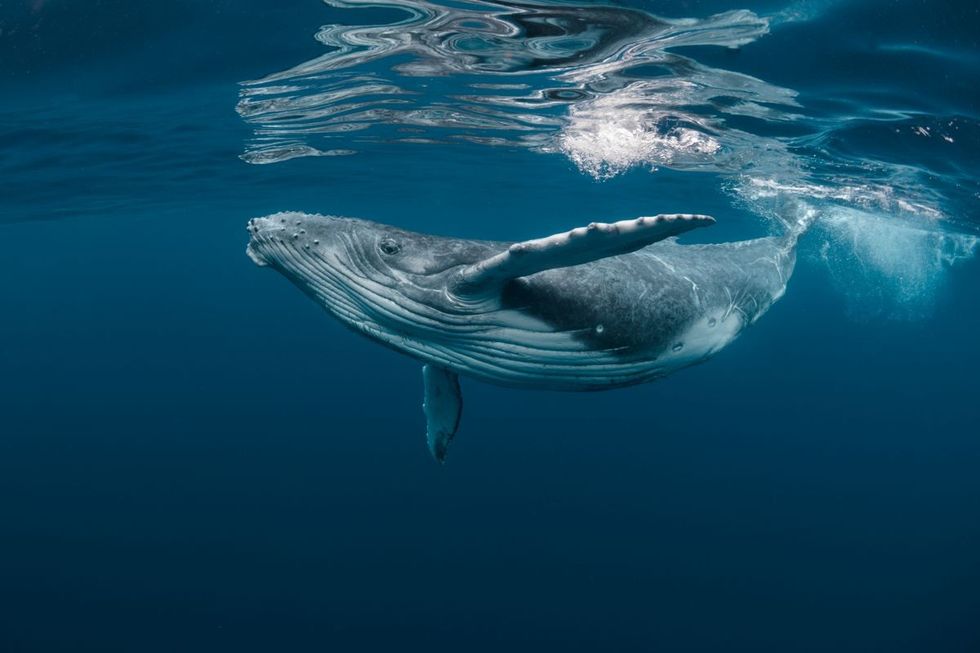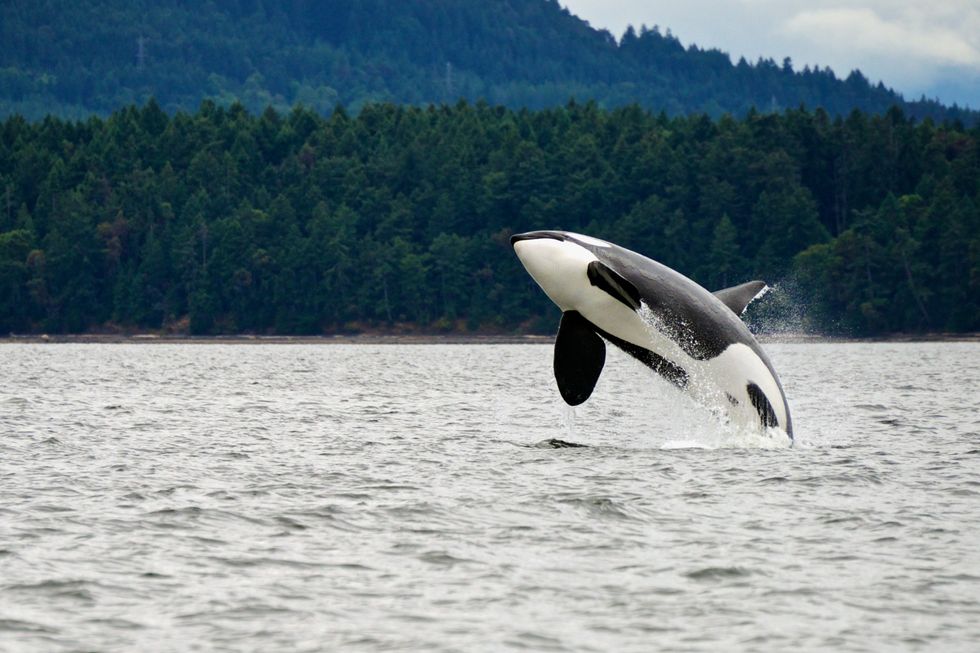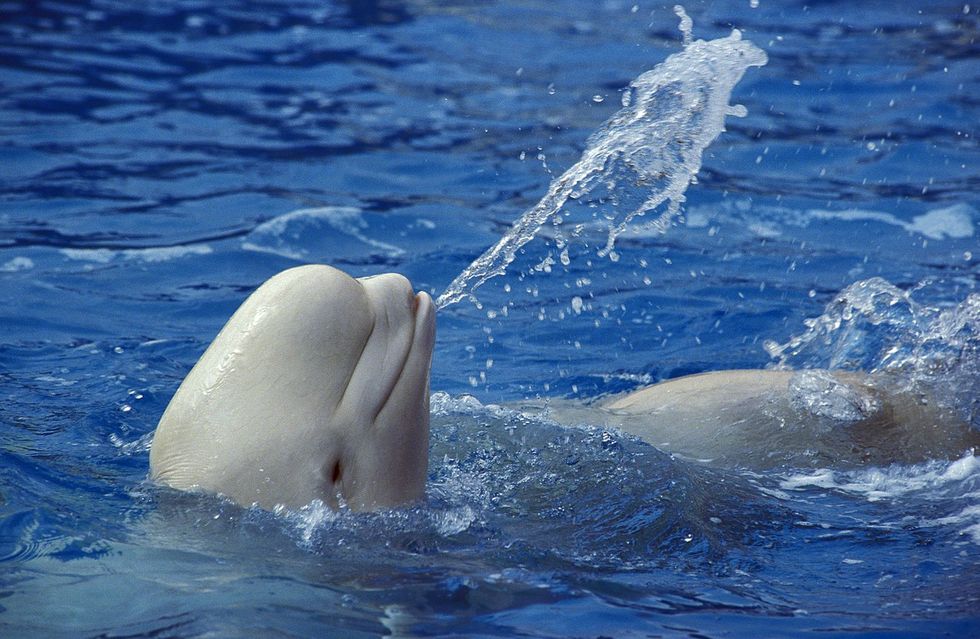Have you ever wondered if whales are actually just giant fish? They live underwater, and they have fins, but there's much more to whales than meets the eye. Understanding whether they're fish or something else entirely is important, not just for fun facts, but for how we protect these amazing ocean creatures.
Whales are among the most fascinating animals on Earth. Their incredible size and unique way of life are a testament to how amazing nature can be.
Let's explore these facts and discover what makes whales warm-blooded, air-breathing mammals, and not fish at all! This journey of discovery will reveal just how special these creatures truly are.
What defines a marine mammal?

Are you ready to dive deep and discover what sets marine mammals apart from their land-dwelling relatives? These remarkable creatures have adapted to life in the water while sharing key characteristics with other mammals. Let's explore the fascinating traits that qualify them as marine mammals, brilliantly engineered for life at sea.
- Marine mammals are a diverse group of about 130 species that rely on the ocean for their existence.
- Unlike fish, all marine mammals breathe air into their lungs, surfacing regularly to take in oxygen.
- They are warm-blooded, meaning they maintain a consistent body temperature regardless of their environment, which is essential for surviving in often cold ocean waters.
- Marine mammals produce milk to feed their young, using their well-developed mammary glands, a hallmark of mammalian species.
- These aquatic wonders give birth to live young; unlike most fish, they do not lay eggs.
- From the giant blue whale to the playful sea otter, marine mammals have fascinating features that help them survive in the ocean. This demonstrates the remarkable ways mammals can adapt to their surroundings.
The Misconception: Why Whales Are Often Mistaken for Fish
 Shutterstock
ShutterstockHave you ever wondered if whales, those enormous creatures of the ocean, are actually fish? It's easy to see why people might think so since they live in the water. However, whales are not fish at all; they're marine mammals! It's time to discover what makes these amazing animals so different from fish.
- Are whales mammals or fish? This question often surfaces due to whales' fish-like appearance and habitat. However, whales are classified as marine mammals and are not fish at all.
- Whales possess mammary glands and give birth to live young, which are features not found in fish.
- Contrary to fish skeletons made of cartilage, such as in sharks, or bones in bony fish, whales have a skeletal structure closer to that of land mammals.
- They are not fish because they are warm-blooded and maintain a stable body temperature, a stark contrast to cold-blooded fish that rely on external conditions to regulate their body heat.
- While fish reproduce by laying eggs, whales do not; they reproduce through live births, nursing their calves with milk produced by their mammary glands.
- A definitive trait that separates whales from fish is that whales breathe air using lungs, so they have to come to the surface regularly, unlike fish which use gills to extract oxygen from water.
Whale Physiology: Traits That Define Whales As Mammals
 Shutterstock
ShutterstockDiscover the fascinating world of whales and learn why these giants of the ocean are considered mammals just like us. Despite living in the water, whales share many surprising features with land-dwelling mammals.
- Among marine life, whales are different due to their warm-blooded nature, actively regulating their body temperature to adapt to various oceanic conditions.
- The cetacean family includes all species of whales, which are divided into two main groups: toothed whales and baleen whales.
- Toothed cetaceans include species like the sperm whale, orca, and dolphins, which hunt and capture individual prey using their well-defined teeth.
- In contrast, baleen whales, such as the humpback and blue whales, filter feed using baleen plates instead of teeth to consume large quantities of small marine organisms.
- Both groups of whales are part of the cetacean family, an assemblage of fully aquatic, marine mammals that share distinctive adaptations ideal for life in the water.
- A unique feature of whales is their tail flukes, horizontal tail fins that provide powerful propulsion through the ocean.
- Whales have evolved with streamlined bodies, reducing resistance while gliding gracefully through their underwater habitat.
The Evolution Of Whales: From Land To Sea
Imagine the ancestors of today's whales walking on land! These facts will guide you through their incredible journey from land-dwellers to the powerful swimmers we admire. It's a story of remarkable change, and here you'll discover how it unfolded.
- Today's whales evolved from land mammals known as even-toed ungulates, which include animals like deer, giraffes, and pigs.
- Paleontologists have discovered fossils that point to a common ancestor shared between these terrestrial creatures and modern-day whales.
- Over millions of years, these ancestral mammals' hind limbs shrank, bodies elongated, and modified nostrils moved toward the top of the head, becoming blowholes.
- This evolutionary path took them from solid ground to the ocean's depths, where they continue to give birth to live young, a characteristic that links them to their mammalian lineage.
- Whales remain closely related to their even-toed ungulate cousins, with molecular studies revealing surprising genetic links despite their different habitats and lifestyles.
The Role Of Whales In The Marine Ecosystem
Whales are more than just giants of the sea; they play a vital part in keeping the ocean healthy! From the enormous blue whale to the clever killer whale, these amazing creatures actively shape the underwater world in surprising ways.
- Whales contribute significantly to marine life, playing an important part in the complex web of marine biodiversity.
- By circulating ocean nutrients, whales help the growth of phytoplankton, which in turn supports a healthy marine food web.
- Humpback whales are known for their unique bubble net feeding technique, where they work together to create spiraling nets of bubbles to corral and capture their prey.
- The mighty sperm whales, with their deep dives, bring nutrients from the ocean's depths to the surface waters, promoting the growth of phytoplankton, which is important for absorbing carbon dioxide from the atmosphere.
- Known as the wolves of the sea, killer whales are apex predators that help maintain the balance of marine species by preying on the sick and weak, thus supporting the health of various marine populations.
- Blue whales, some of the Earth's largest creatures, contribute unique and important nutrients like nitrogen and iron to the ocean through their waste. These nutrients act as a natural fertilizer, supporting the growth of marine plants.
Protection And Conservation: Human Impact On Whale Populations
 Getty Images/iStockphoto
Getty Images/iStockphotoWhen you think of whales roaming the wide oceans, remember that humans have a big impact on their lives and well-being. Over time, human actions have greatly affected these amazing animals, and now there's a worldwide effort to protect them.
- Whales and other marine mammals are at risk due to the impact of human actions. This highlights the urgent need for strict conservation efforts.
- Many species of whales, once hunted to the brink of extinction for their oil and meat, are now under the protection of international laws and agreements aimed at their survival.
- Cetaceans, including right whales and others like the blue whale, are among the most endangered marine mammals, often impacted by ship strikes and entanglement in fishing gear.
- The North Pacific right whale, one of the most critically endangered whale species, is a key focus of conservation efforts, receiving special attention to increase its numbers.
- The infraorder Cetacea, which includes all whales, dolphins, and porpoises, is protected under various environmental regulations aiming to preserve these magnificent creatures and their habitats.
- The conservation of species extends beyond whales; seals and sea lions also receive protection to reduce the impacts of pollution, overfishing, and habitat destruction.
FAQs
Are polar bears considered marine mammals like whales and dolphins?
Indeed, polar bears are classified within marine biology as marine mammals, much like whales and dolphins, because they depend on the marine environment for food and habitat, particularly the sea ice of the Arctic Ocean.
What makes dolphins and porpoises different from other marine mammals?
Dolphins and porpoises, along with whales, belong to the scientific group known as whales, dolphins, and porpoises, or Cetacea. They are different from other marine mammals like seals because of their cetacean characteristics, such as their top-notch echolocation abilities and streamlined bodies designed for swimming.
Are sharks related to whales, considering they are both large sea creatures?
While sharks and whales may share the ocean as their home, they are quite different; sharks are not mammals. Unlike whales, which are warm-blooded and give birth to live young, sharks are fish, because they are cold-blooded and mostly lay eggs or give birth to live young in a manner that does not involve milk production.
How do whales swim and how does it differ from fish?
Whales swim uniquely by moving their tail flukes up and down, pushing themselves through the water with grace and power. This is different from how fish swim, which typically involves flexing their bodies and tails from side to side.
Do all female whales nurse their live young?
Yes, all female whales, as true mammals, have mammary glands to nourish their live young. Nursing is a clear mammalian trait that whales, including dolphins and porpoises, share, which is also why they are not considered fish.
Although they live in the ocean, whales are not fish, but rather marine mammals. Like land mammals, they breathe air, have a warm body temperature, give birth to live young, and nurse their calves with milk. These traits place them firmly within the mammal family, alongside their fellow marine mammals, dolphins and porpoises.
Learning the differences between whales and fish helps you appreciate the amazing variety of ocean life. It also shows you why protecting these incredible creatures and their homes is so important. With this knowledge, you can make choices that help keep the oceans healthy, so whales will continue to flourish for many years to come.
Related Articles Around the Web





 Shutterstock
Shutterstock Shutterstock
Shutterstock Getty Images/iStockphoto
Getty Images/iStockphoto




